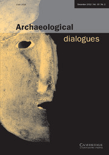
Archaeological Dialogues
Scope & Guideline
Exploring Diverse Perspectives in Archaeological Research
Introduction
Aims and Scopes
- Interdisciplinary Approaches:
The journal encourages the integration of diverse disciplines, such as anthropology, sociology, and cultural studies, to enrich archaeological research and provide broader insights into human pasts. - Ethics and Social Responsibility:
A consistent focus on ethical considerations in archaeology, particularly in post-conflict and colonial contexts, reflecting a commitment to social justice and the responsible stewardship of cultural heritage. - Cultural Narratives and Identity:
Exploration of how archaeology can inform and shape narratives of identity, including discussions on Indigenous frameworks and the implications of historical injustices. - Playful and Engaged Archaeology:
An emerging area that examines the role of play and engagement in archaeological practice, advocating for more accessible and enjoyable approaches to archaeology. - Global and Local Interactions:
Research that examines the interplay between global trends and local practices, particularly in the context of cultural heritage and archaeological interpretation.
Trending and Emerging
- Playful Archaeology:
An increasing interest in 'playful archaeology' suggests a trend towards making the discipline more engaging and accessible, encouraging public participation and enjoyment in archaeological practices. - Post-Colonial and Decolonizing Frameworks:
There is a growing emphasis on post-colonial perspectives and decolonization within archaeology, reflecting a critical examination of the discipline's historical roots and its impact on marginalized communities. - Anthropocene and Non-Anthropocentric Perspectives:
The exploration of archaeology's role in the Anthropocene marks a significant trend, focusing on the relationship between humans and the environment while considering non-anthropocentric viewpoints. - Indigenous Knowledge Systems:
An increasing integration of Indigenous conceptual frameworks and methodologies represents a shift towards valuing diverse epistemologies and recognizing the importance of local knowledge in archaeological research. - Globalization and Cultural Interactions:
Emerging themes around globalization and its effects on cultural practices and archaeological interpretation highlight the interconnectedness of past societies and contemporary issues.
Declining or Waning
- Traditional Archaeological Methodologies:
There is a noticeable decline in papers focusing solely on traditional excavation and artifact analysis, as the journal increasingly emphasizes theoretical discussions and interdisciplinary methods. - Eurocentric Perspectives:
Themes centered on Eurocentric archaeological narratives are becoming less prevalent, indicating a shift towards more inclusive and diverse perspectives that challenge historical biases. - Strictly Historical Narratives:
The focus on linear historical narratives is waning, with more emphasis on complex, multifaceted understandings of the past that incorporate various cultural and social dimensions.
Similar Journals
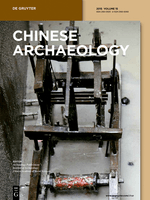
Chinese Archaeology
Revealing the Secrets Beneath China's SoilChinese Archaeology, published by WALTER DE GRUYTER GMBH, is a leading journal dedicated to the exploration and study of China's rich archaeological heritage. With an ISSN of 2160-5025 and an E-ISSN of 2160-5068, this journal serves as an essential platform for scholars, researchers, and enthusiasts in the field of archaeology, offering a blend of original research articles, reviews, and critical essays that address both contemporary issues and historical narratives. While it currently operates under a conventional access model, making cutting-edge research available to a select audience, it plays a crucial role in advancing knowledge about China's archaeological sites, artifacts, and past civilizations. Given the increasing interest in Eastern archaeology and its significance in a global context, Chinese Archaeology is positioned as a pivotal resource for understanding and interpreting the complexities of China’s historical evolution. Researchers and academics are encouraged to contribute and engage with this vital field of study to foster greater insights and innovations.

Epohi
Connecting History with Contemporary Thought.Epohi is a distinguished academic journal published by the St Cyril and St Methodius University Publishing House, focusing on interdisciplinary research in the fields of social sciences and humanities. With its ISSN 1310-2141 and E-ISSN 2534-8418, the journal aims to provide a platform for innovative thought and scholarly discourse, bridging gaps between historical perspectives and contemporary issues. While currently exploring open access options to enhance accessibility, Epohi remains a pivotal resource for researchers, professionals, and students seeking to contribute to and engage with cutting-edge research. Situated in the serene locale of Veliko Tarnovo, Bulgaria, this journal not only enriches the academic landscape but also fosters collaboration and professional growth in the broader scholarly community.

Synesis
Exploring New Frontiers in Academic DiscourseSynesis is a distinguished academic journal published by UNIV CATOLICA PETROPOLIS, renowned for its commitment to advancing knowledge across a broad spectrum of disciplines, predominantly in the fields of social sciences and humanities. Operating under the ISSN 1678-6785 and E-ISSN 1984-6754, this journal provides a critical platform for researchers, professionals, and students to share original research articles, reviews, and scholarly discussions that contribute to the ongoing dialogue in these areas. Although it operates under a traditional access model, Synesis endeavors to maintain high quality and rigor in the peer-review process, ensuring that published works meet the highest academic standards. With its solid foundation laid in the intellectual hubs of Brazil, Synesis plays a vital role in fostering international collaborations and enhancing the visibility of Brazilian research on the global stage. Researchers seeking to disseminate their findings in a respected forum will find Synesis an invaluable outlet for their work.

ARCHAEOLOGY IN OCEANIA
Illuminating the Mysteries of the Pacific's Ancient CulturesARCHAEOLOGY IN OCEANIA, published by Wiley, is a leading journal that delves into the rich and diverse archaeological landscape of the Pacific region. With a commitment to advancing knowledge in anthropology and archaeology, this esteemed publication has been pivotal in shaping scholarly discussions since its inception in 1966. Spanning generations of research, it has seen converged years of publication from 1966 to 1980 and from 2002 to 2024. With an impressive Scopus ranking placing it in the top quartiles across multiple categories - including Q2 in Anthropology and Q1 in Archeology (arts and humanities) - the journal distinguishes itself as a must-read for researchers, professionals, and students alike. Although it operates on a subscription model, its rigorous peer-reviewed articles and comprehensive studies contribute significantly to understanding the past of Oceania, making it an essential resource for those invested in this vibrant field of study.

Revue Archeologique du Centre de la France
Unveiling the Past: A Journey Through Central France's Archaeological TreasuresRevue Archeologique du Centre de la France is a prestigious academic journal dedicated to the field of archaeology, with a special focus on the rich historical and cultural heritage of central France. Published by FED EDITION REVUE ARCHEOLOGIQUE CENTRE FRANCE, this journal has been an open-access platform since 2004, ensuring that researchers, professionals, and students can freely access cutting-edge archaeological findings and scholarly discussions. With an acute emphasis on disseminating knowledge and fostering ongoing dialogue in archaeology, Revue Archeologique du Centre de la France serves as a vital resource for those keen to explore the complexities of French archaeological studies. Housed in Tours, this journal not only highlights regional heritage but also situates it within broader archaeological frameworks, making it an essential contribution to the field. Researchers can look forward to engaging with a diverse array of articles that cover both theoretical and applied aspects of archaeology, bolstering the understanding of our shared past.
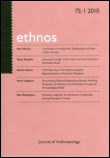
ETHNOS
Illuminating Cultural Phenomena Since 1936ETHNOS is a leading journal published by Routledge Journals, Taylor & Francis Ltd, dedicated to advancing the field of anthropology and archaeology. With an impressive impact factor reflected in its high Scopus rankings—#23 in Archaeology and #44 in Anthropology—the journal is recognized for its rigorous scholarship and its influence on contemporary discussions in social science. Operating since 1936, ETHNOS provides a vital platform for innovative research and theoretical discourse, making it an essential resource for professionals, academics, and students alike. Although it does not offer Open Access, its meticulous editorial standards and Q1 classification in both Anthropology and Archaeology guarantee substantive contributions to the study of culture and society. Located in the United Kingdom, the journal continues to shape the narratives surrounding social and cultural phenomena, enriching the academic landscape up to 2024 and beyond.
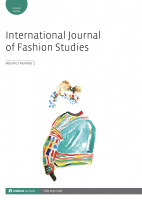
International Journal of Fashion Studies
Fostering Critical Analyses of Fashion's ImpactInternational Journal of Fashion Studies, published by INTELLECT LTD in the United Kingdom, is at the forefront of scholarly discourse in the realm of fashion, encompassing the intersecting fields of cultural studies and visual arts. With a strong focus on the socio-cultural dimensions of fashion, this journal has established itself as a valuable platform for researchers, professionals, and students to disseminate innovative ideas and critical analyses. Ranked Q3 in Cultural Studies and Q2 in Visual Arts and Performing Arts for 2023, it boasts notable Scopus rankings, positioning it among the top-tier journals in its respective categories. The journal is committed to exploring diverse perspectives on fashion phenomena through rigorous research and ethical inquiry. Notably, it provides essential insights into contemporary issues affecting the fashion industry while promoting an understanding of fashion's cultural significance. The International Journal of Fashion Studies is an indispensable resource for those looking to stay informed about the latest developments and trends in the dynamic field of fashion studies.

TRANSACTIONS OF THE ANCIENT MONUMENTS SOCIETY
Charting the Path of Ancient ArchitectureTRANSACTIONS OF THE ANCIENT MONUMENTS SOCIETY is a distinguished journal published by the Ancient Monuments Society in the United Kingdom, focusing on the rich interplay between architecture, conservation, and religious studies as they pertain to ancient monuments and heritage. With an ISSN of 0951-001X, this journal serves as an essential platform for researchers, professionals, and students interested in exploring methodologies, case studies, and theoretical perspectives that enhance our understanding of historical preservation and cultural significance. Although it has been classified in Q4 quartiles in prominent categories such as Architecture, Conservation, and Religious Studies, the journal plays a vital role in fostering scholarly dialogue in these areas. Access options and updates are available, making it easier for enthusiasts and experts alike to engage with ongoing discussions surrounding ancient monuments. Despite its discontinued coverage in Scopus, the journal remains an invaluable resource for those aiming to contribute to the conservation discourse and to understand the relevance of ancient sites in contemporary society.

Open Archaeology
Championing Open Access for Cultural PreservationOpen Archaeology is a distinguished open-access journal dedicated to publishing high-quality research in the fields of archaeology, conservation, and education. Since its inception in 2015, the journal has established itself under the esteemed publication of DE GRUYTER POLAND SP Z O O, experiencing rapid growth and recognition, culminating in a Q1 ranking in both Archaeology and Conservation categories as of 2023. Based in the vibrant academic environment of Poland, Open Archaeology caters to a global audience, illustrated by its Scopus rankings which position it 16th in Conservation and 69th in Archaeology, showcasing its significant impact in the arts and humanities sphere. The journal aims to foster interdisciplinary discourse and disseminate innovative research findings to enhance understanding and preservation of cultural heritage. With an unwavering commitment to open access, it encourages widespread dissemination of knowledge, making it an invaluable resource for researchers, professionals, and students alike.
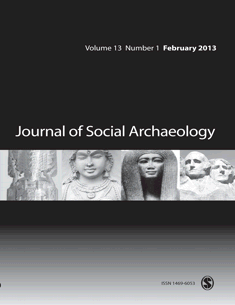
JOURNAL OF SOCIAL ARCHAEOLOGY
Examining the Tapestry of Human InteractionJOURNAL OF SOCIAL ARCHAEOLOGY, published by SAGE Publications Ltd, stands at the forefront of interdisciplinary research where archaeology meets social science. With an ISSN of 1469-6053 and an E-ISSN of 1741-2951, this esteemed journal provides a platform for investigation into the social dimensions of past human behaviors and interactions. Since its inception in 2001, it has garnered substantial recognition, currently ranked in the Q1 quartile in both Archaeology and Arts and Humanities (miscellaneous) categories for 2023, positioning it among the top-tier journals within these fields. Additionally, its Scopus rankings, where it holds a notable placement of #35/354 in Social Sciences and #124/552 in Arts and Humanities, underscore its significant impact, falling within the 90th and 77th percentiles, respectively. The journal aims to foster innovative research that challenges traditional archaeological narratives and enriches our understanding of the social constructs and cultural contexts of the past. Although not open access, JOURNAL OF SOCIAL ARCHAEOLOGY remains an essential resource for scholars, professionals, and students dedicated to unlocking the complexities of human history through a social lens.